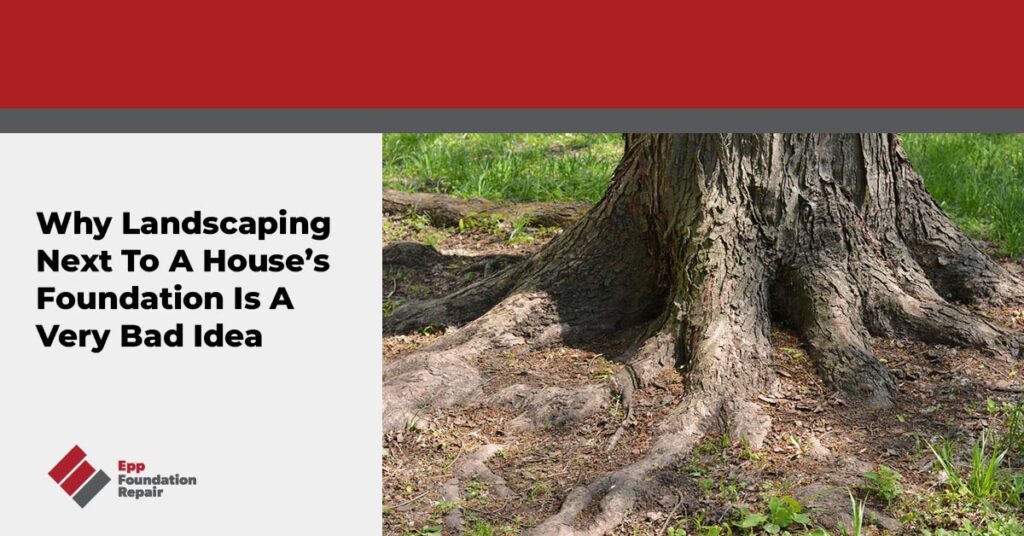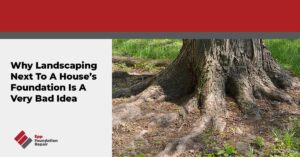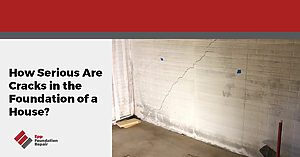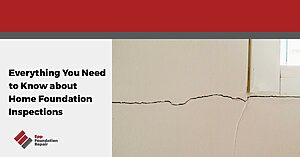Looking for information about landscaping next to a house’s foundation? If so, don’t hit that back button because you’ve landed on the right page. In this article, we’re going to talk about the most common cause of foundation problems, why it’s not a good idea to plant flowers, shrubs, etc., next to your home’s foundation, the best way to prevent foundation trouble, and more.
Most Foundation Problems Are Caused By Water
Homeowners are often surprised to learn that most foundation problems are caused by water, either too much water in the soil around the foundation or not enough. Here’s how it happens…
Too much water in the soil around a foundation
When there’s too much water in the ground around a foundation, and it can’t drain off, you’re likely to end up with foundation problems. This is especially true if your home was built on expansive or erosion-prone soil.
How expansive soil and excess moisture can cause foundation trouble
Expansive soil contains a lot of clay. Because of this, it will swell as it soaks up water and then shrink as it dries out. This back-and-forth, swelling-shrinking cycle – which is usually seasonal – creates movement in the ground under the foundation. Over time, this will lead to a phenomenon called “differential settlement,” or when a foundation is settling into the ground unevenly. Differential settlement puts a lot of stress on the foundation and will lead to structural damage. See the infographic below for a visual representation of differential settlement.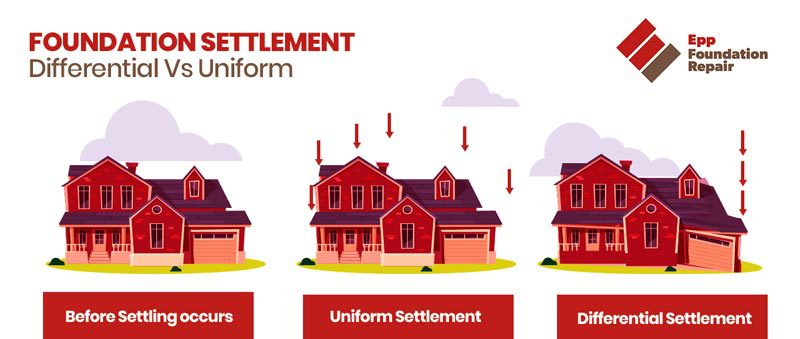
How erosion-prone soil and excess moisture can cause foundation trouble
If the soil under a foundation is prone to erosion, excess moisture can cause the soil to wash away, leaving behind voids. If the foundation sinks into the voids, you’ll end up with differential settlement and structural damage.
Not enough water in the soil around a foundation

A lack of water in the soil around a foundation can also cause a lot of trouble. This might happen during a drought or when large tree roots “drink” water from the soil, leaving behind voids. If the foundation settles into the voids, you’ll get differential settlement and foundation damage.
Why Landscaping Next To A House’s Foundation Is A Very Bad Idea
Landscaping next to a house’s foundation might look beautiful. Still, it’s a bad idea because flowers, shrubs, etc., need water, which means you’ll add water to the soil around the foundation. This is what you’re trying to avoid.
However, this doesn’t mean you can’t landscape your yard. It just means you shouldn’t plant water-hungry flowers, shrubs, trees, or any other type of vegetation next to your house.
For more information, see The Importance Of Proper Foundation Drainage Around Your Home.
Prevent Foundation Trouble By Getting Groundwater Under Control
Not landscaping next to your home’s foundation is just one way to prevent foundation trouble by getting groundwater under control. Here are some other things you can do:
- If necessary, regrade the yard around your home, so it slopes away from the foundation – This will prevent water from draining toward and pooling around the foundation.
- Keep your gutters debris-free – This prevents water from spilling over the side of the house and soaking into the ground around the foundation.
- Use downspout extensions to carry water away from the foundation before releasing it.
- Install an underground downspout and pop-up emitter – Runoff from the gutters flows into the underground downspout and toward the pop-up emitter in your yard some distance from the foundation. When the emitter fills with water, it pops up and releases it away from the foundation.
- Install a drain tile system – This is a waterproofing gold standard and the best way to control groundwater around the foundation. We’ll talk more about it in the next section.
How A Drain Tile System Works
A drain tile system prevents excess moisture from building up in the ground around the foundation. There are two types of drain tile systems, exterior and interior. Both can be installed in existing homes.
Exterior drain tile system
An exterior drain tile system goes around the outside perimeter of your home’s foundation at the footing level. The general installation procedure is as follows:
- The soil around the foundation is excavated
- A shallow trench is dug around the perimeter of the foundation and lined with gravel.
- A drainage pipe with holes is then placed into the trench and covered with more gravel.
- Finally, the excavated soil is put back.
Any excess water in the soil will flow into the drainage pipe and toward a sump pit. Once the water reaches a certain level in the sump pit, a sump pump will turn on and release it away from the foundation.
Interior drain tile system
An interior drain tile system is installed along the inside perimeter of a basement or crawl space. If you’re going to install an interior drain tile system in a basement, it will mean breaking up the basement floor around the perimeter. The general installation procedure is as follows:
- The contractor will dig a shallow trench around the inside perimeter of the basement or crawl space.
- After the trench is lined with gravel, a perforated drainage pipe is placed in it and then covered with more gravel.
- If the basement is going to be finished, the slab will be replaced. However, some homeowners choose to leave the drainage ditch open if they aren’t going to finish the basement.
Excess moisture in the ground now flows into the perforated drainage pipe and toward the sump pit. When the sump pit fills with water, a sump pump kicks in and expels the water away from the foundation.
For more information, see How Does A Drain Tile System Work?
Installing a drain tile system – exterior or interior – is a major construction project. We don’t recommend trying to do it yourself. Contact a foundation repair contractor near you and let them handle it.
If you’re wondering how to handle landscaping next to your house’s foundation, contact us today. We serve areas in Lincoln, Omaha, Grand Island, Kearney, Nebraska, Missouri, Iowa and parts of Northeastern Kansas.

